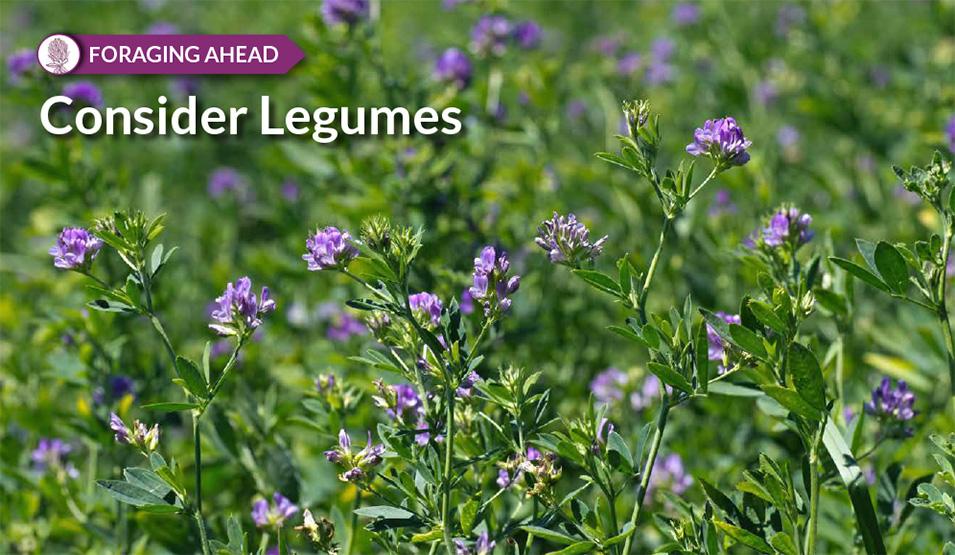
Forage legumes have long been recognized as being beneficial in pastures and hayfields, but in recent years there has justifiably been heightened interest in them. Here are just a few reasons to consider growing these special plants.
Nitrogen Fixation
When associated with the proper type of bacteria, most legumes can obtain nitrogen from the air and “fix” it in nodules on the roots. The quantity of nitrogen fixed by a legume stand varies depending on a number of factors. However, the amount fixed by a good stand (lbs/acre/year) is usually in the range of 50 to 150 for annual clovers, 75 to 200 for white clover and red clover, and 150 to 300 for alfalfa.

Forage Quality
As compared to grasses, legumes are usually higher in crude protein, digestibility, minerals, and vitamins. The result is better performance of grazing animals in terms of higher gains, milk production, and reproductive rates. Countless grazing experiments have verified this.
Distribution of Growth
Introducing legumes into grass pastures often extends the grazing season. Red clover is especially likely to provide additional summer production when grown with cool-season perennial grasses. Also, several annual legumes can extend the grazing season when grown with annual grasses or when overseeded on warm-season perennial grasses.
Forage Yield
Dry matter yield per acre from a grass/legume mixture is often higher than from grass alone, especially if little or no nitrogen fertilizer is applied to the grass.
Crop Rotation Benefits
Legumes not only provide nitrogen for succeeding crops, but they also improve soil tilth and may create root channels that benefit subsequent crops.
Reduced Animal Toxicities
Growing legumes with toxic endophyte tall fescue can reduce fescue toxicity symptoms and substantially improve animal performance. Legumes also contain more magnesium (Mg) than grasses, and thus can reduce the likelihood of grass tetany, the underlying cause of which is Mg deficiency.
Environmental Acceptability

The nitrogen provided by legumes is a slow-release form of this element, which is more environmentally friendly than commercial nitrogen. Legumes also furnish pollen and nectar for bees, tend to increase populations of beneficial predatory insects, and are a preferred food of many wild animals.
Profit
In simple terms, profit is gross income minus expenses. Thus, either increasing income or lowering expenses can increase profit levels. Forage legumes have the potential of simultaneously increasing income by improving animal performance and lowering costs by reducing nitrogen fertilizer requirements.
Keys to success
Growing legumes isn’t simple. Most require a higher soil pH and higher levels of phosphorus and potassium. Persistence is often less than for many grasses. Most legumes are more sensitive to herbicides. Bloat can be a problem with some legumes in some situations.
Not all fields are suited to growing legumes, but they can be grown on most livestock farms in the southeast. In situations where they can reasonably be grown, the advantages usually greatly outweigh the disadvantages. Keys to legume success include selecting the proper legume for a particular site and situation, providing soil amendments as needed, and providing management that minimizes grass competition.

Foraging Ahead is a bi-weekly column presented by Ragan & Massey and written by Dr. Don Ball, Professor Emeritus at Auburn University. Dr. Ball is one of the authors of the popular book, “Southern Forages,” available here.
